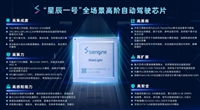Input/Output Functional Descriptions
Symbol
Type
Function
CK0_t, CK0_c,
CK1_t, CK1_c
Clock: CK_t and CK_c are differential clock inputs. All address and control input signals
are sampled on the crossing of the positive edge of CK_t and negative edge of CK_c.
Input
Clock Enable: CKE HIGH activates and CKE LOW deactivates internal clock signals and
device input buffers and output drivers. Taking CKE LOW provides Precharge Power-
Down and Self-Refresh operation (all banks idle), or Active Power-Down (row Active in
any bank). CKE is aynchronous for Self-Refresh exit. After VREFCA and Internal DQ Vref
CKE0, CKE1
Input have become stable during the power on and initialization sequence, they must be
maintained during all operations (including Self-Refresh). CKE must be maintained high
throughout read and write accesses. Input buffers, excluding CK_t, CK_c, ODT and CKE,
are disabled during power-down. Input buffers, excluding CKE, are disabled during Self-
Refresh.
Chip Select: All commands are masked when CS_n is registered HIGH. CS_n provides for
CS0_n, CS1_n,
CS2_n, CS3_n
external Rank selection on systems with multiple Ranks. CS_n is considered part of the
command code.
Input
CS2_n and CS_3_n are not used on UDIMMs.
Chip ID: Chip ID is only used for 3DS for 2,4,8 high stack via TSV to select each slice of
Input stacked component. Chip ID is considered part of the command code.
Not used on UDIMMs.
C0, C1, C2
ODT0, ODT1
ACT_n
On-Die Termination: ODT (registered HIGH) enables RTT_NOM termination resistance
internal to the DDR4 SDRAM. When enabled, ODT is only applied to each DQ, DQS_t,
DQS_c and DM_n/DBI_n/TDQS_t,NU/TDQS_c (When TDQS is enabled via Mode
Register A11=1 in MR1) signal for x8 configurations. For x16 configuration, ODT is
Input
applied to each DQ, DQSU_t, DQSU_c, DQSL_t, DQSL_c, DMU_n, and DML_n signal.
The ODT pin will be ignored if MR1 is programmed to disable RTT_NOM.
Activation Command Input: ACT_n defines the Activation command being entered along
Input with CS_n. The input into RAS_n/A16, CAS_n/A15 and WE_n/A14 will be considered as
Row Address A16, A15 and A14.
Command Inputs: RAS_n/A16, CAS_n/A15 and WE_n/A14 (along with CS_n) define the
command being entered. Those pins have multi function. For example, for activation
Input with ACT_n Low, these are Addresses like A16, A15, and A14. But for non-activation
command with ACT_n High, these are Command pins for Read, Write, and other
commands defined in command truth table.
RAS_n/A16,
CAS_n/A15,
WE_n/A14
Input Data Mask and Data Bus Inversion: DM_n is an input mask signal for write data.
Input data is masked when DM_n is sampled LOW coincident with that input data during
a Write access. DM_n is sampled on both edges of DQS. DM is muxed with DBI function
by Mode Register A10, A11, A12 setting in MR5. For x8 device, the function of DM or
TDQS is enabled by Mode Register A11 setting in MR1. DBI_n is an input/output
identifying whether to store/output the true or inverted data. If DBI_n is LOW, the data
will be stored/output after inversion inside the DDR4 SDRAM and not inverted if DBI_n is
HIGH. TDQS is only supported in x8 SDRAM configurations.
DM_n/DBI_n/
TDQS_t,
(DMU_n/DBIU_n), Output
(DML_n/DBIL_n)
Input/
TDQS is not valid for UDIMMs.
Rev. 1.2 / Mar.2016
6










 三星深化印度制造布局,供应链本地化进程加速
三星深化印度制造布局,供应链本地化进程加速

 芯擎科技“星辰一号”自动驾驶芯片点亮成功,2025年量产在即
芯擎科技“星辰一号”自动驾驶芯片点亮成功,2025年量产在即

 纳微科技震撼发布GaNSlim革新氮化镓功率芯片
纳微科技震撼发布GaNSlim革新氮化镓功率芯片

 意法半导体发布第四代SiC技术,助力电动汽车电驱
意法半导体发布第四代SiC技术,助力电动汽车电驱
